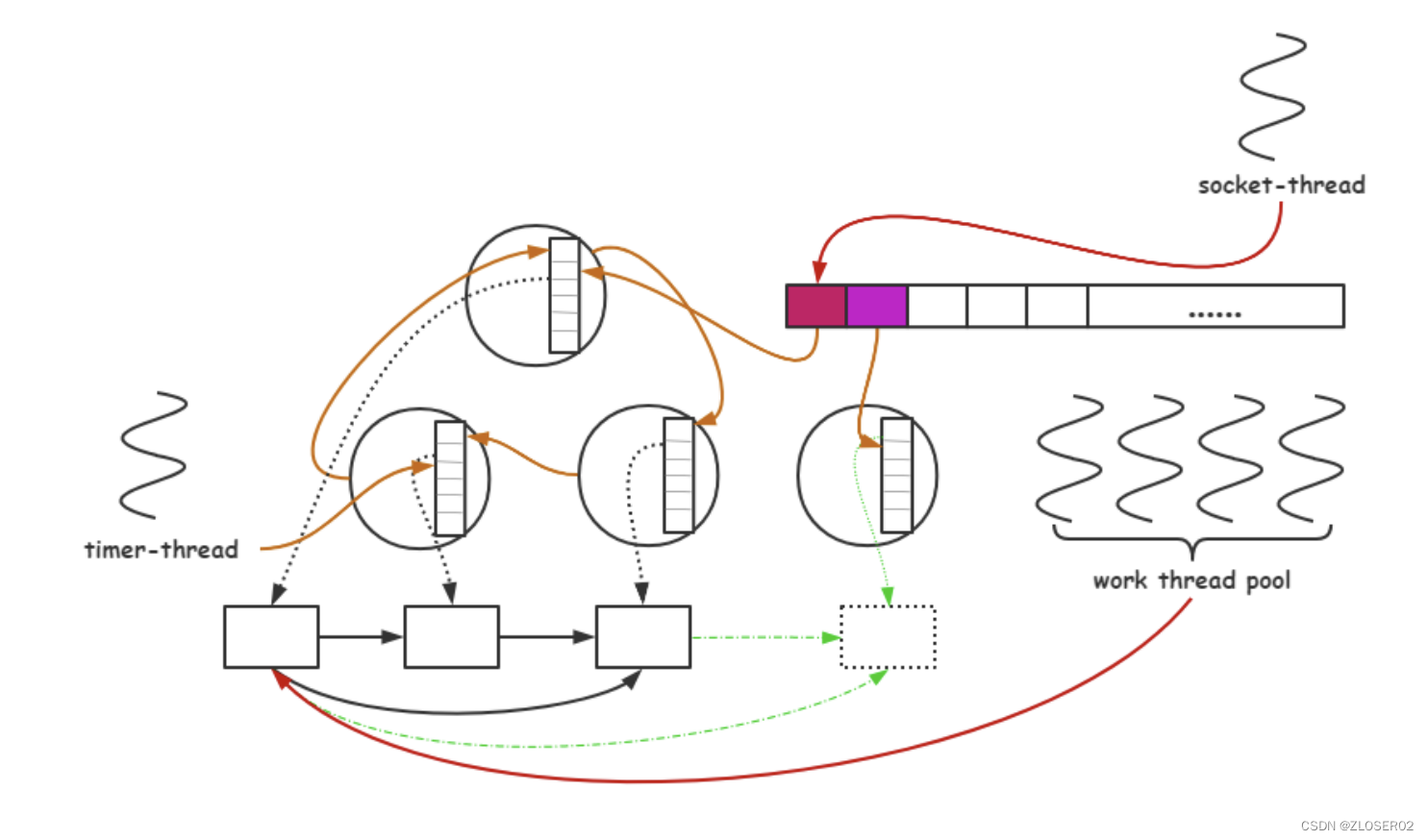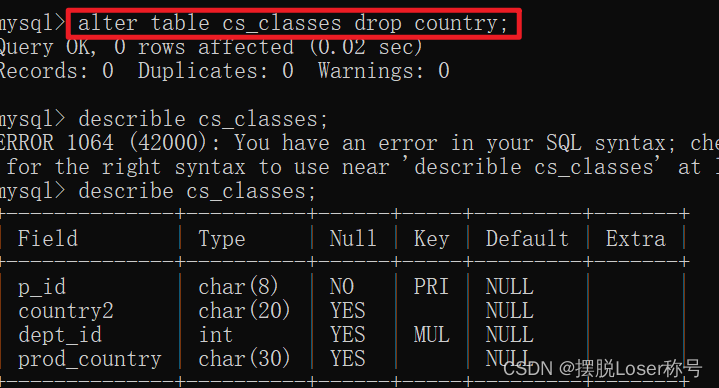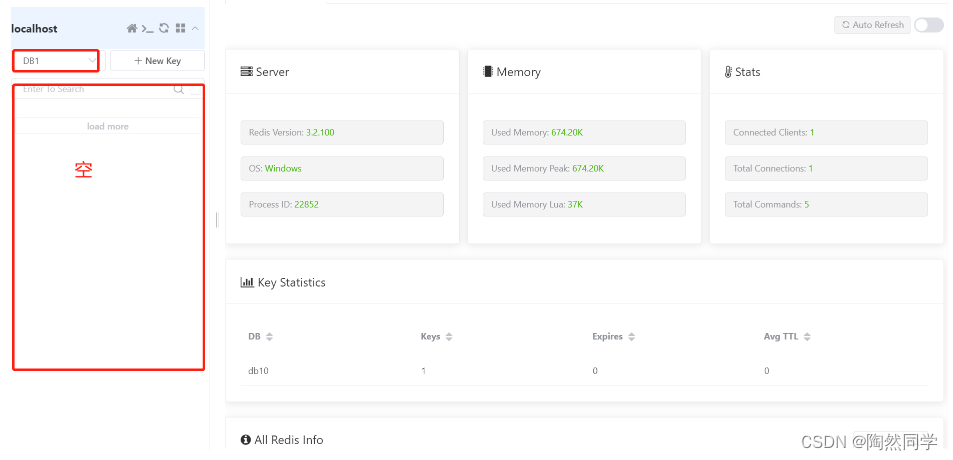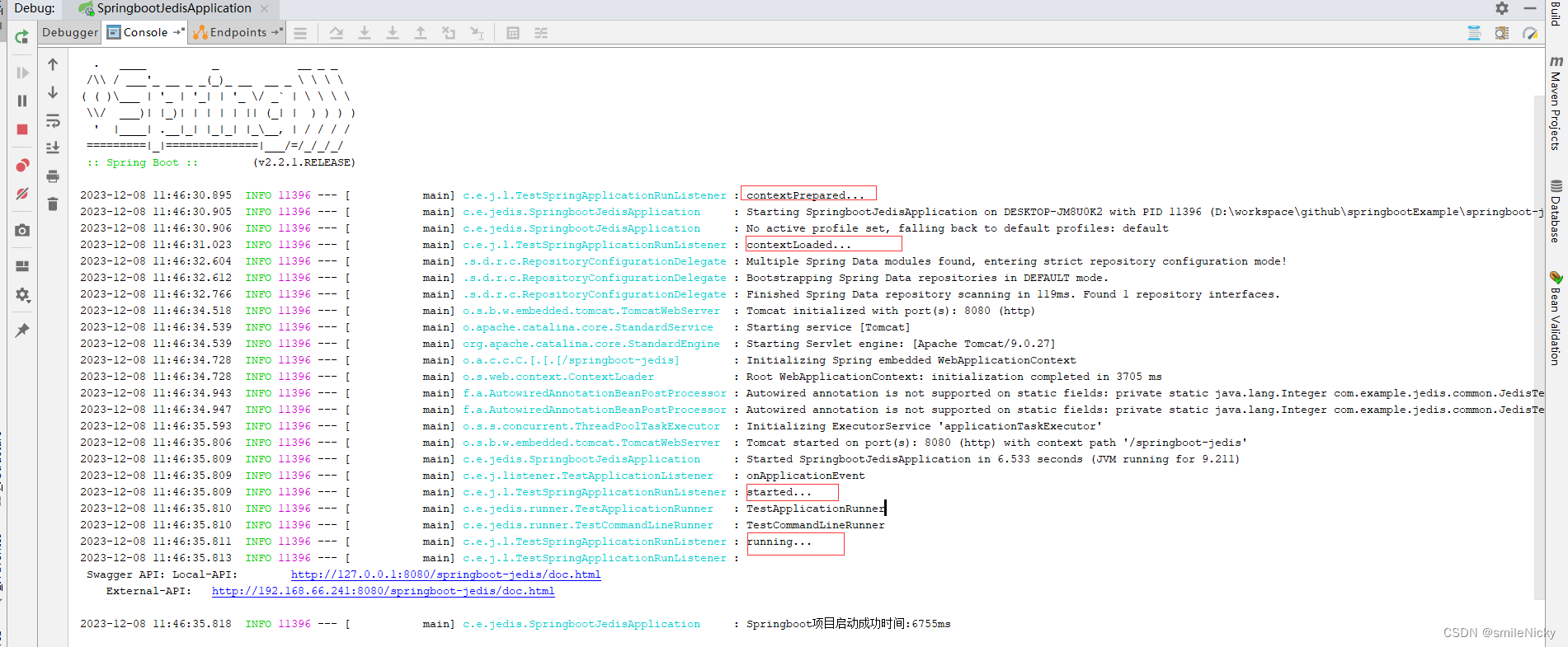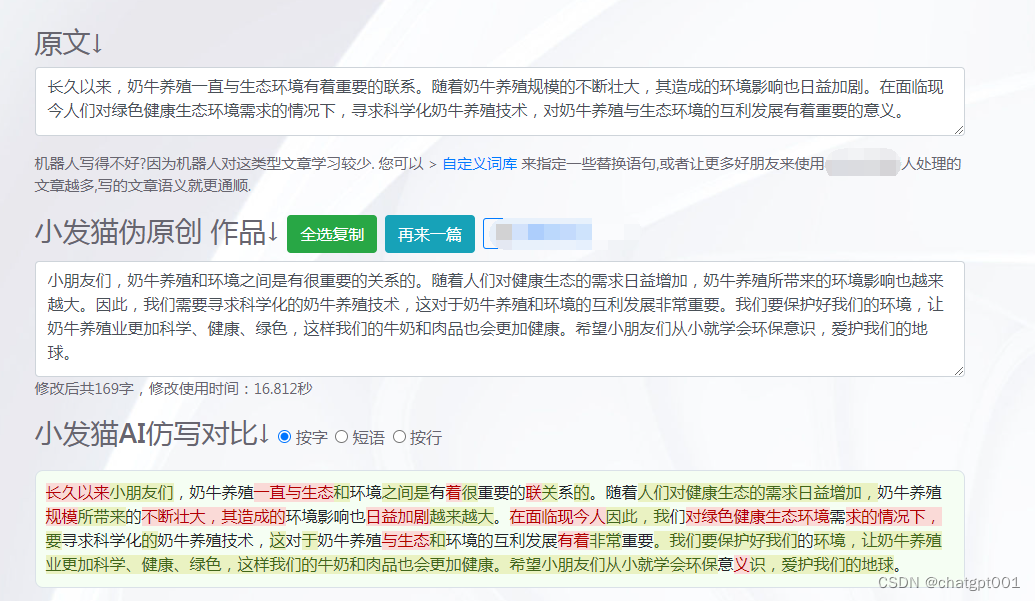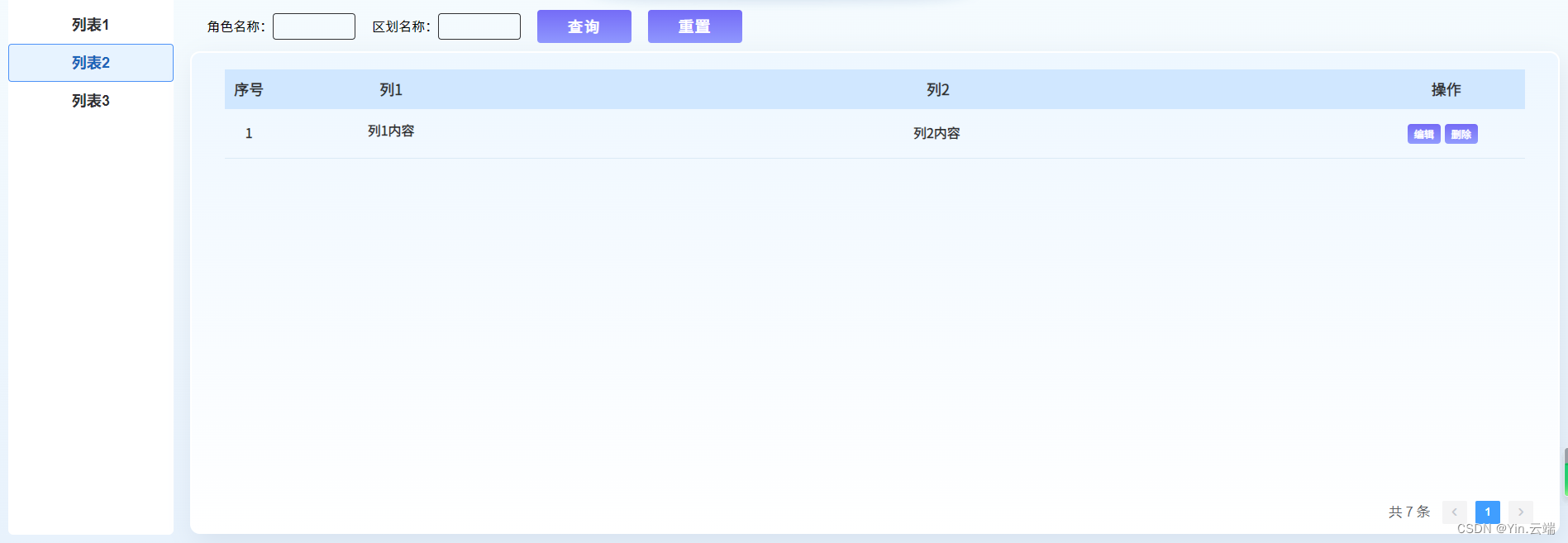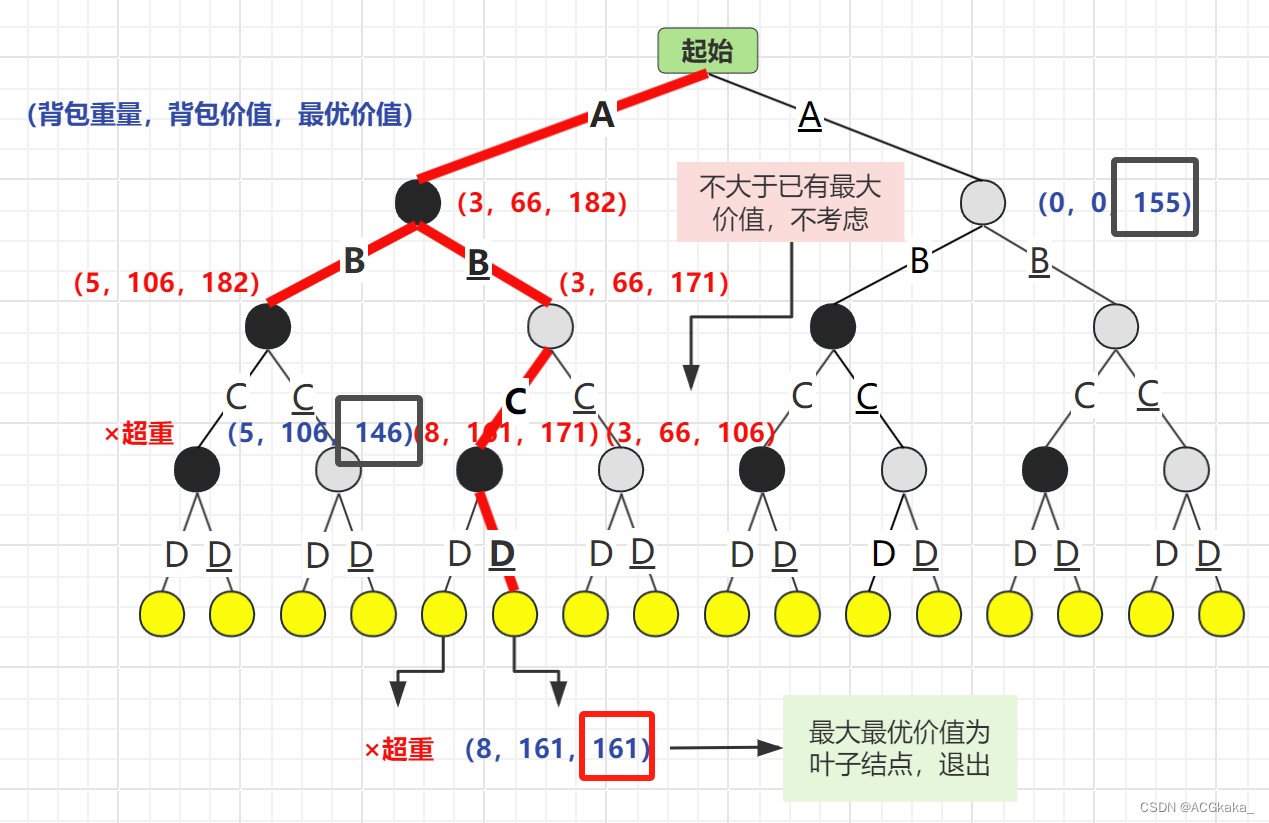线程池的原理与实现
- 线程池简介
- 1.线程池
- 1.线程池
- 2.数量固定的原因
- 3.线程数量如何确定
- 4.为什么需要线程池
- 5.线程池结构
- 线程池的实现
- 数据结构设计
- 1.任务结构
- 2.任务队列结构
- 3.线程池结构
- 接口设计
- 线程池的应用
- reactor
- redis 中线程池
- skynet 中线程池
线程池简介
1.线程池
1.线程池
一种管理维持固定线程数量的池式结构。
2.数量固定的原因
- 避免频繁的创建和销毁线程,造成资源浪费
- 随着线程的数量不断增多,并不能实现性能的提升,相反可能造成系统负担
3.线程数量如何确定
- CPU密集型:proc(CPU核心数)
- IO密集型(网络IO,磁盘IO):2 * proc(CPU核心数)
4.为什么需要线程池
某类任务执行特别耗时,造成阻塞,严重影响该线程执行其他任务
作用:
- 复用线程资源;
- 减少线程创建和销毁的开销;
- 可异步处理生产者线程的任务;
- 减少了多个任务(不是一个任务)的执行时间;
5.线程池结构
线程池属于一种生产消费模型。
线程池运行环境构成:
生产者线程:发布任务
队列:存储任务,调度线程池
消费者线程:取出任务,执行任务
线程池的实现
数据结构设计
1.任务结构
typedef struct task_s {void *next;handler_pt func;void *arg;
} task_t;
2.任务队列结构
typedef struct task_queue_s {void *head;void **tail; int block;spinlock_t lock;pthread_mutex_t mutex;pthread_cond_t cond;
} task_queue_t;
3.线程池结构
struct thrdpool_s {task_queue_t *task_queue;atomic_int quit;int thrd_count;pthread_t *threads;
};
接口设计
// 创建对象的时候,回滚式的
static task_queue_t *
__taskqueue_create() {task_queue_t *queue = (task_queue_t *)malloc(sizeof(*queue));if (!queue) return NULL;int ret;ret = pthread_mutex_init(&queue->mutex, NULL);if (ret == 0) {ret = pthread_cond_init(&queue->cond, NULL);if (ret == 0) {spinlock_init(&queue->lock);queue->head = NULL;queue->tail = &queue->head;queue->block = 1;return queue;}pthread_cond_destroy(&queue->cond);}pthread_mutex_destroy(&queue->mutex);return NULL;
}static void
__nonblock(task_queue_t *queue) {pthread_mutex_lock(&queue->mutex);queue->block = 0;pthread_mutex_unlock(&queue->mutex);pthread_cond_broadcast(&queue->cond);
}static inline void
__add_task(task_queue_t *queue, void *task) {void **link = (void **)task; // malloc *link = NULL; // task->next = NULL;spinlock_lock(&queue->lock);*queue->tail = link;queue->tail = link;spinlock_unlock(&queue->lock);pthread_cond_signal(&queue->cond);
}static inline void *
__pop_task(task_queue_t *queue) {spinlock_lock(&queue->lock);if (queue->head == NULL) {spinlock_unlock(&queue->lock);return NULL;}task_t *task;task = queue->head;queue->head = task->next;if (queue->head == NULL) {queue->tail = &queue->head;}spinlock_unlock(&queue->lock);return task;
}static inline void *
__get_task(task_queue_t *queue) {task_t *task;// 虚假唤醒while ((task = __pop_task(queue)) == NULL) {pthread_mutex_lock(&queue->mutex);if (queue->block == 0) {// break;pthread_mutex_unlock(&queue->mutex);return NULL;}// 1. 先 unlock(&mtx);// 2. 在 cond 休眠// ----- 生产者产生任务 signal// 3. 在 cond 唤醒// 4. 加上 lock(&mtx);pthread_cond_wait(&queue->cond, &queue->mutex);pthread_mutex_unlock(&queue->mutex);}return task;
}static void
__taskqueue_destroy(task_queue_t *queue) {task_t *task;while ((task = __pop_task(queue))) { // 任务的生命周期由 thrdpool 管理free(task);}spinlock_destroy(&queue->lock);pthread_cond_destroy(&queue->cond);pthread_mutex_destroy(&queue->mutex);free(queue);
}static void *
__thrdpool_worker(void *arg) {thrdpool_t *pool = (thrdpool_t*) arg;task_t *task;void *ctx;while (atomic_load(&pool->quit) == 0) {task = (task_t*)__get_task(pool->task_queue);if (!task) break;handler_pt func = task->func;ctx = task->arg;free(task);func(ctx);}return NULL;
}static void
__threads_terminate(thrdpool_t * pool) {atomic_store(&pool->quit, 1);__nonblock(pool->task_queue);int i;for (i=0; i<pool->thrd_count; i++) {pthread_join(pool->threads[i], NULL);}
}static int
__threads_create(thrdpool_t *pool, size_t thrd_count) {pthread_attr_t attr;int ret;ret = pthread_attr_init(&attr);if (ret == 0) {pool->threads = (pthread_t *)malloc(sizeof(pthread_t) * thrd_count);if (pool->threads) {int i = 0;for (; i < thrd_count; i++) {if (pthread_create(&pool->threads[i], &attr, __thrdpool_worker, pool) != 0) {break;}}pool->thrd_count = i;pthread_attr_destroy(&attr);if (i == thrd_count)return 0;__threads_terminate(pool);free(pool->threads);}ret = -1;}return ret;
}void
thrdpool_terminate(thrdpool_t * pool) {atomic_store(&pool->quit, 1);__nonblock(pool->task_queue);
}thrdpool_t *
thrdpool_create(int thrd_count) {thrdpool_t *pool;pool = (thrdpool_t*) malloc(sizeof(*pool));if (!pool) return NULL;task_queue_t *queue = __taskqueue_create();if (queue) {pool->task_queue = queue;atomic_init(&pool->quit, 0);if (__threads_create(pool, thrd_count) == 0) {return pool;}__taskqueue_destroy(pool->task_queue);}free(pool);return NULL;
}int
thrdpool_post(thrdpool_t *pool, handler_pt func, void *arg) {if (atomic_load(&pool->quit) == 1) {return -1;}task_t *task = (task_t *)malloc(sizeof(task_t));if (!task) return -1;task->func = func;task->arg = arg;__add_task(pool->task_queue, task);return 0;
}void
thrdpool_waitdone(thrdpool_t *pool) {int i;for (i=0; i<pool->thrd_count; i++) {pthread_join(pool->threads[i], NULL);}__taskqueue_destroy(pool->task_queue);free(pool->threads);free(pool);
}线程池的应用
reactor
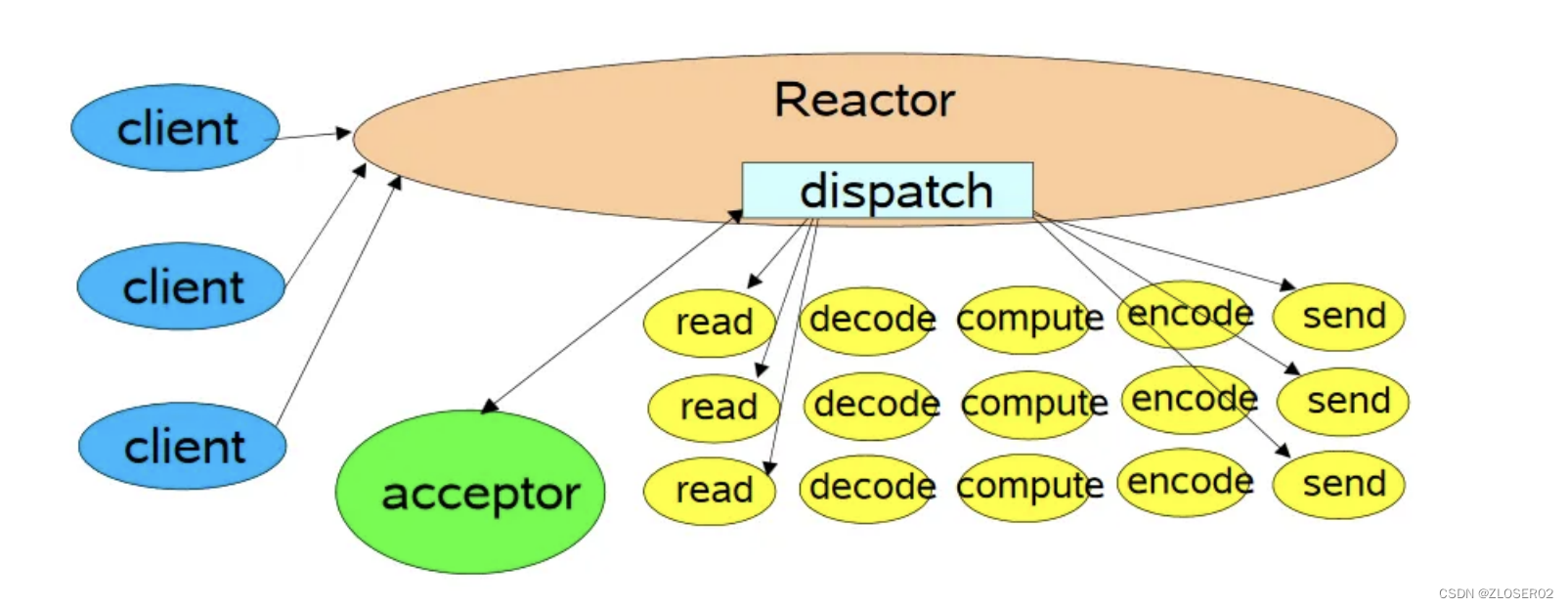
在一个事件循环中,可以处理多个就绪事件,这些就绪事件在reactor 模型中时串行执行的,一个事件处理若耗时较长,会延迟其他同时触发的事件的处理(对于客户端而言,响应会变得较慢)。
redis 中线程池
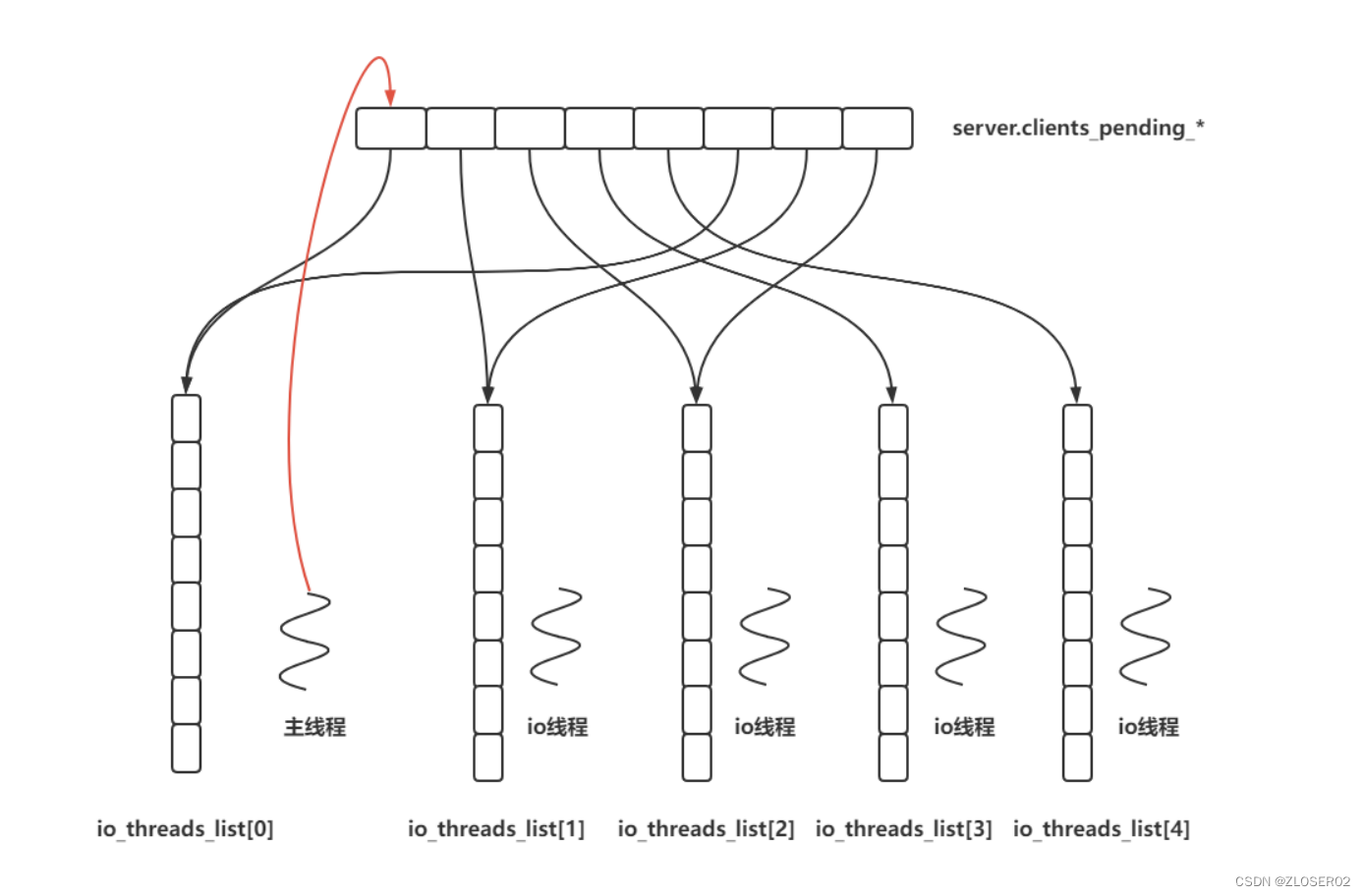
作用:读写 io 处理以及数据包解析、压缩;
skynet 中线程池
